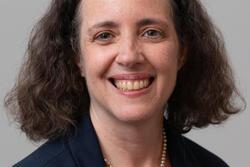Climates of Change
In 1905, New York was a city of seemingly boundless opportunity — the entryway into a land where new jobs, secure homes, and potential legacies were within reach — even for the most destitute of immigrants, of whom a significant percentage were young, single Jewish women.
This same New York was a city of disease, pollution, and poverty. Many immigrants did not move on from New York, choosing instead to settle in the city and chase their American Dream on its cobbled, soot-covered streets. For the new immigrant, these were streets that could lead to unimaginable wealth, but could just as easily lead to chronic illness, disability, and death. Newcomers to New York did not, of course, go looking for such misfortune. They were looking to earn a living, and they did so in the jobs that were available to them. These jobs typically involved long hours, hazardous conditions, and intense discomfort. From these jobs, many workers went home to unsafe tenements, where opportunistic landlords crowded as many bodies as possible into each building. For the lower-income residents of the city, it was a fact of life that their employers and landlords were not focused on their safety but on how to obtain the most labor and the most money, respectively, from these new Americans.
The Triangle Shirtwaist Factory fire stands out as the most striking example of how this ruthless drive for profit came at the cost of human life, but so do the countless tenement fires, factory accidents, and epidemics that swept through overly crowded neighborhoods, ending the lives and dreams of the people who lived there. While the overall economic picture may have been bright for the people who lived in the stately, tree-lined streets, this wealth came at a massive cost to the lives of their employees, adding up to a chronically underserved, at-risk population — certainly, this was not a group of people who were reaching their full potential as Americans, or as workers.
Look at the last paragraph again. Then replace the first sentence’s “The Triangle Shirtwaist Factory fire” with “Hurricane Katrina,” and “tenement fires, factory accidents, and epidemics” with “droughts, floods, and epidemics.” Change the verb tense to the present, but otherwise let the last sentence stand as it is.
You come up with this: Hurricane Katrina stands out as an example of this ruthless drive for profit at the cost of human life, but so do the countless droughts, floods, and epidemics that sweep through overly crowded neighborhoods that end the lives and dreams of the people who live there. While the overall economic picture may be bright for the people who live on the stately, tree-lined streets, it’s coming at a massive cost to the lives of their employees, adding up to a chronically underserved, at-risk population — certainly, this is not a group of people who are reaching their full potential as Americans, or as workers.
You’re not talking about Eastern European immigrants anymore, and you’re most certainly not talking about manufacturing. Heck, you’re not even in New York. A couple of word changes and a verb tense update brings us into the present and about 1,200 miles south, to New Orleans, Louisiana — the epicenter of one of the worst US policy failures of our era, and a modern day example of what, and who, gets forgotten when economic motives trump all others.
On March 27, 2017, President Trump committed the United States to writing the next chapter of the story that’s present whenever profit comes before safety and sustainability, and when human life is seen as less valuable than immediate profit.
Those affected are no longer Eastern European immigrants in factory neighborhoods, but people of color in places like New Orleans, wage workers in low-lying coastal areas like Miami, and pickers whose salaries depend on good harvests — and good weather. These are the people who will be the most vulnerable, who will be forgotten and unaided in time of disaster. This is to say nothing of people in developing countries who depend on agriculture and the land for their livelihoods.
3.6 does not, objectively, seem like a large number. However, if the planet warms 3.6 degrees, that is the point of no return — the point at which extreme weather will become normal and humans will have to adapt to survive.
Companies such as Google, Apple, Tesla, and other innovators will likely rise to meet that challenge. Humans are resourceful creatures; this much we know. What we don’t know, and perhaps what we don’t want to think about, are the people who are going to lose their homes, their jobs, and possibly their lives to the trends to which our world will become subject if climate change continues. By and large, they are low-income people of color — exactly the people whose potential Mr. Trump considers irrelevant to his twisted idea of America, and the people whom society already prefers to ignore. In 1905 they were in New York, in 2005 they were in New Orleans and now they are in Vietnam, California and Brazil. They will be the ones to shoulder the burden that Mr. Trump ostensibly relieves from the shoulders of midwestern coal miners with this executive order.
The financial insecurity, uprootedness, and fear is not going to evaporate because of the executive order. It’s just going to be shunted to people whose votes didn’t elect Trump, people who he considers to be less human, to be expendable, the people whom he can push offstage to suffer in relative silence — people who are already systemically disenfranchised, and will only become more so as the effects of climate change encroach on their homes, incomes, and lives. Indeed, the suffering will likely be magnified as the interests of an entire population are sacrificed for those of a single industry.
“America First” made up much of the sentiment that helped to elect President Trump — America as the world’s most powerful country, America as the leader of the democratic world, America as the innovator and moral compass of the globe — all of which, it would seem, some fifty percent of the county feel that we have fallen behind on. But America is more than discontented coal miners (as demonstrated by the April 28 Climate march). If we are to continue to lead the world in growth, values, and the pursuit of dignity for all people, we cannot abandon our responsibility and privilege as a nation with both the capacity to evolve and the mantle of power. Otherwise, we risk throwing away our reputation — and the well-being of the only planet we have.






